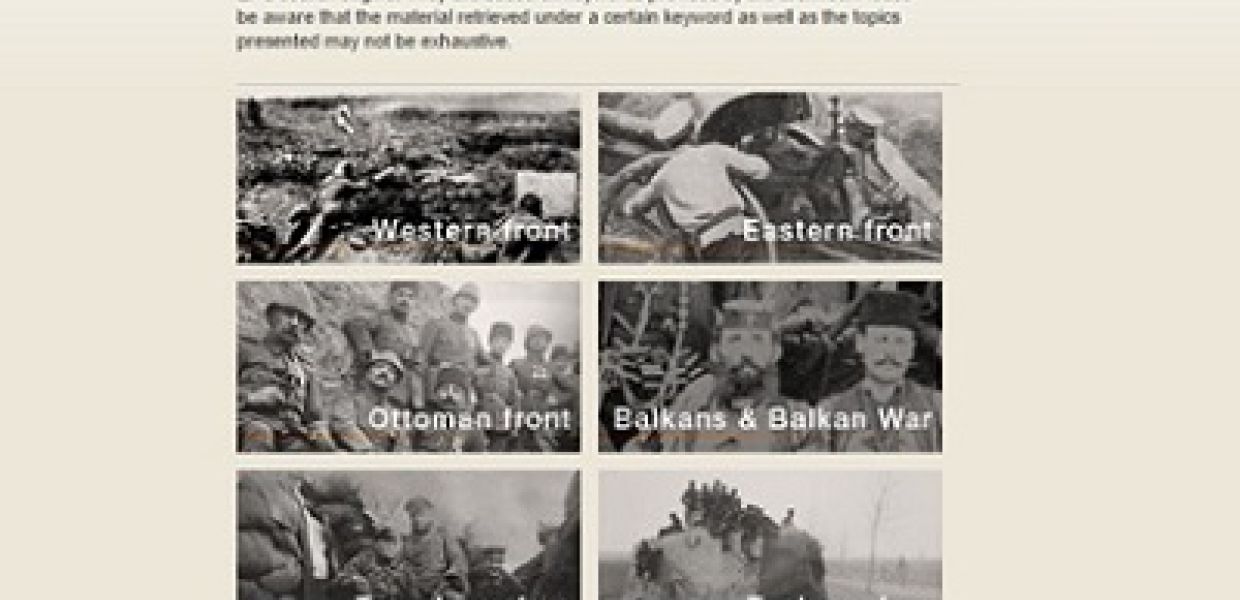Searching the European Film Gateway

European Film Gateway: Improving search results on WW1 topics by streamlining metadata amongst content providers
A guest blog post is a collaboration between Steven Stegers, Programme Director of the European Association of History Educators (EUROCLIO), and Georg Eckes and Julia Welter from the European Film Gateway (EFG).
Making sure that it is possible to find information is a challenge that those in charge of curating collections have in common. People faced with this challenge have – as could be expected – responded to it in different ways, have often organised and catalogued their collections following an internal logic. As a consequence, it can become difficult for users of online portals (that give access to collections from various cultural institutions) to search across collections, often because a lot of different vocabularies are used, from different languages.
The European Film Gateway faced this challenge when they worked with 26 partners to make over 700 hours of film footage (ca. 3,000 film titles) from 21 film archives available online in the scope of the EFG1914 project (2012-2014). In order to make it easier for people to find footage they are looking for, the project partners agreed to enrich their own metadata using a sub-set of WWI-related terms from the Library of Congress Subject Headings (LCSH). Not only did this ensure that users could find interesting and relevant resources more easily, but it also helped the archives set their priorities for digitization and to identify common themes across their collections.
Moreover, using a common vocabulary proved useful when the EFG1914 project shared their data on the Europeana 1914-1918. On this portal the film archives’ collections can be searched alongside documents held by national libraries that also applied WWI-related LCSH terms. Similar to the thematic entry points on the European Film Gateway, Europeana 1914-1918 also offers users access to collections via several topics based on the LCSHs.

A screenshot of European Film Gateway, Educators can immediately get an idea of what content is available.
For educators and other users, this streamlining of vocabularies is very useful because it makes it easier to find, compare and contrast relevant content from multiple sources. Using a thematic entry point into the WWI collections allows educators to explore different aspects of the war across different countries, for example the lives of civilians, or how animals were used in the war. The list of topics made available on the European Film Gateway page (see screenshot above) also helps educators to get a quick overview of what content is available in the collections.
Because of the streamlining of metadata, educators now have access to audiovisual materials covering different aspects of World War I with content from different archives. For example, those who select the category 'casualties' will find material from more than 20 different content providers. This is important because searching for 'casualties' within one collection often shows a one-sided perspective that might, for instance, give an impression that the war casualties were enemies. The ability to search across collections gives a much richer offer of materials and different perspectives for educators that want to teach about this topic.
The presentation of the selected World War 1 topics using thumbnails and titles helps educators to see at a glance what is available in terms of content. The presentation itself invites research questions (such as how different the fighting was at the various fronts, or what the impact was on civilians), encourages educators to focus on aspects of the war that normally do not get so much attention (such as the role of women in the war, the impact of the war on children or use of animals in the war) and enables students to look at aspects of the war that they find especially interesting (which helps to motivate them to learn more about this topic). By presenting the content in such a way, curators can highlight content that they know is interesting and which educators would otherwise have difficulty finding.
#Europeana4Education
